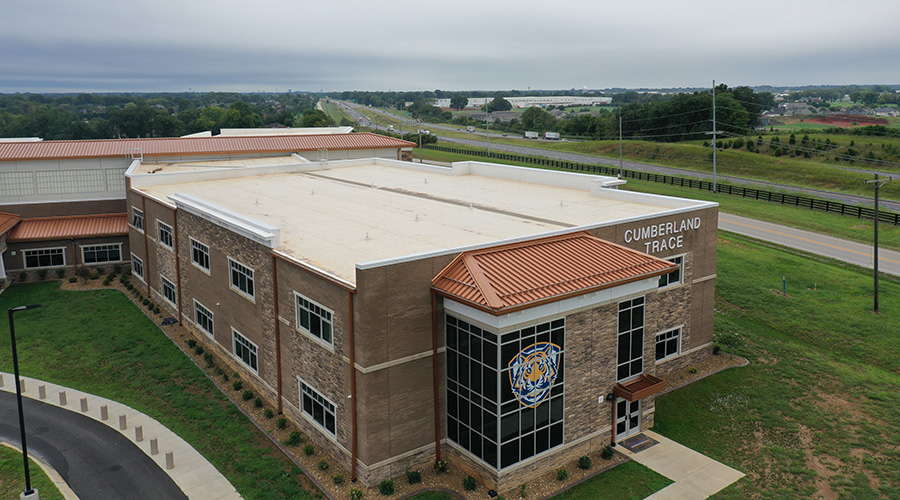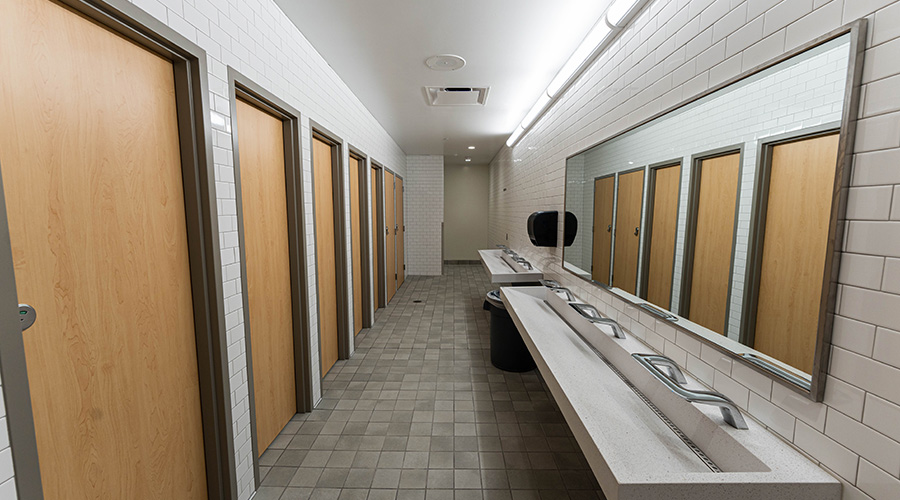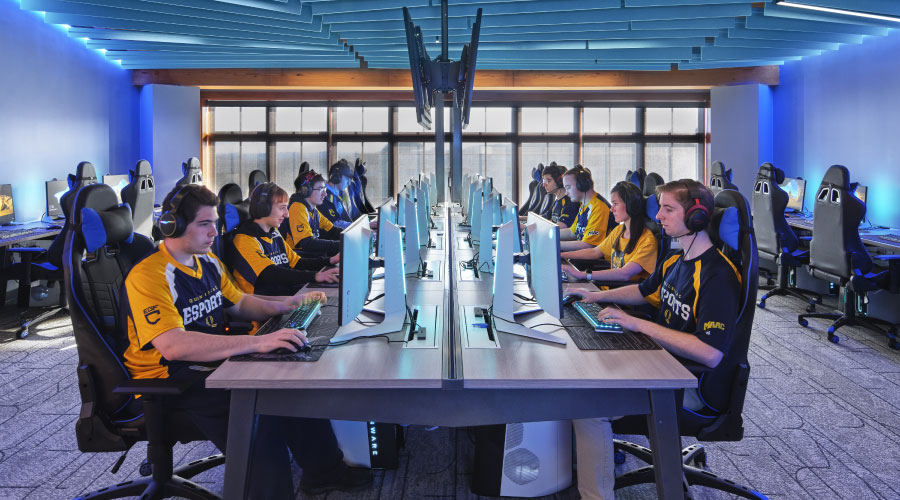Looking Back at Virginia Tech
The massacre at Virginia Tech has led colleges and universities to scrutinize their emergency response plans and campus notification systems
What if? That’s the question college and university facility executives have been struggling with in the wake of the shootings at Virginia Tech. What if a student or visitor decides to go on a rampage on their campus? How would the organization respond? How should it respond?
As any facility executive who has been through an emergency knows, a well-laid and well-understood plan is essential to getting through a crisis. Most facility executives will never confront an emergency on the scale of Virginia Tech, where a disgruntled student killed 32 students and staff. But the violence serves as a stark reminder that facility executives and campus safety and security officers should constantly evaluate security procedures and protocols, and make sure that the campus is prepared for every type of threat.
In the wake of the tragedy at Virginia Tech, facility executives’ initial instincts may be to beef up physical security measures. However, experts caution that this approach alone won’t lead to the best solution.
“Everybody would love to buy equipment and say, ‘I’m done,’ but it doesn’t work that way,” says Paul Timm, PSP, president of RETA Security and a member of the ASIS Education Institutions Council. “The appropriate physical technology is good if it’s motivated by the right policy.”
A case in point, Timm says, is the use of card swipe access control systems in college dormitories to limit access to the building. If students are not properly educated about the reasons for installing the system, it’s likely to fail. Students will hold the door open for other people or loan their cards out. For the system to work as intended, students must be educated about its purpose.
Metal detectors are another way of securing buildings on a college campus, but experts caution that these measures must be considered in the context of the university environment. Ken Cooper, director of safety and security at Bard College, points out that the need for physical security on campus must be balanced with the goals of the university.
“A university is a public facility, and you can’t put x-ray machines at every door,” says Cooper. “It’s the antithesis of what a college campus is supposed to be.”
Mass Notification
Physical access control measures will depend on the resources and perceived threats of each individual campus, but one approach that has gained widespread consideration since Virginia Tech is mass notification. Cell phones and e-mail offer ways of broadcasting information in the event of an emergency, but they will not reach people who don’t have cell phones and those not in front of a computer. Timm points out that cell phone notifications would require students and faculty to register their cell phone numbers, something not everyone would be willing to do. What’s more, in an emergency, networks can easily become saturated and shut down.
Public address systems are one method of immediately notifying an entire campus of an emergency situation. John Krezoski, director of university safety assurance at the University of Wisconsin-Milwaukee, says he is considering installing a campuswide PA system. Krezoski says about half of the buildings on campus already have a PA system installed, and expanding the system would provide an efficient way to reach the entire campus in an emergency.
Video notification systems also are a way to inform people en masse. Bill Plackenmeyer, director of security at Barnard University, says he attended a conference recently where the idea of installing flat screen televisions in building hallways was suggested. Plackenmeyer says he believes these types of mass notification systems should be carefully evaluated, however, and should be considered as part of the larger communication goals.
Krezoski agrees, and says one thing to consider with mass notification systems is the panic that could result from blasting a message about a gunman on campus.
“One idea is to use the PA to broadcast a message saying check your e-mail, check the news or check your phones,” says Krezoski.
Bob Lang, assistant vice president for strategic security and safety at Kennesaw State University, says he agrees that a layered approach to communication is a good strategy.
“Looking at communication vehicles, there’s not one product that will solve the problem,” he says. “You can have an early warning system where you can broadcast a specific message to stay away or evacuate. Then you can focus on individual warnings — blast e-mails and cell phone messages to get the information to as many people as possible.”
The Right Message
In the case of any campus emergency, communication is the most important issue. And getting the message to people as quickly as possible is essential.
“There are three important components to security — time, time and time,” says Timm. “The faster you can act the better chance you have at protecting people.”
During emergency situations, the message being communicated to people must be clear, concise and accurate. A rush to communicate without carefully considering how the message will be perceived can result in confusion, which could delay getting people to safety. According to Plackenmeyer, experience has shown that hasty communication can lead to inaccurate information being disseminated. It’s important to carefully consider the message and make sure the source of the information is solid.
The desire to avoid panic should not prevent communication, however, especially if there is still a potential threat. Timm advises erring on the side of caution when deciding whether to notify people of an emergency situation.
“If the bad guy is still in motion, we want to protect as many people for as long as possible,” he says. “It’s all about time.”
Communicating with students and faculty during the emergency response planning process, as well as on a continual basis, is a good way to promote awareness and to ensure that there is a quick response in an emergency.
“The security force will have the skills, talent and training to respond to a situation,” says Cooper. “It’s the public who need to be trained.”
Cooper says that working with students and faculty can help build familiarity with the security force.
“It’s about connecting with the people on campus and developing trust with the people you are serving,” he says. “You want to cultivate good relationships so students are confident about security. It’s not something you can buy and put in place. It’s something you have to earn.”
Timm agrees and says that regular e-mail blasts alerting students and faculty to security issues on campus — such as suspicious vehicles or individuals — can help keep people mindful of the need to be safe.
“There is a difference between fear and awareness,” he says. “A raised level of awareness is an important aspect of a security program.”
Involving students and faculty in the emergency planning process can also mean training them in how to respond to an emergency, says Timm. Lock down drills are a good way of educating and preparing those on campus on how to respond.
Emergency drills do not have to be a traumatic experience. “When fire drills were first proposed, the initial reaction was that kids would be traumatized, but they weren’t,” says Timm. “A lock down drill is a way to be prepared, and we should be doing them.”
Including students and faculty in the emergency planning process is essential to a workable safety plan, and the focus should be on the execution of the plan, Lang says.
“If the students — the primary people involved in the situation — don’t know what to do in an emergency, you’re planning to fail,” says Lang. “It’s a changing culture — the question is not whether or not you have a plan, but whether or not it works.”
Facility Executive’s Role
Key to creating a workable emergency response plan is communicating and partnering with those involved in campus life. According to Plackenmeyer, facility executives are an important part of this team and can provide valuable insight as to what is realistic in terms of physical security.
“The facility executive is critical in deciding how much money can be spent, how long the project will take, and what tools will be best for the facility,” says Plackenmeyer. “They know what can and can’t be done in buildings.”
Facility executives also have an intimate knowledge of the physical aspects of the building, says Plackenmeyer, and can often spot safety and security hazards before anyone else.
The Security Team
Cooper says he agrees that facility executives and security officers should work hand in hand when it comes to designing and implementing a security plan. Everything from installing a closed circuit television system to evaluating the quality of door locks requires dialogue between the facility executive and campus security.
“The facility executive’s best friend should be campus security,” says Cooper. “Both should have a grasp of what threats are real. Building a security plan is a series of compromises between what administration wants and what is possible.”
Facility executives can also be an important part of emergency response, and can provide valuable information to police officers as an event is unfolding. Because of the facility executive’s knowledge and the resources they have, it is important that they be included in the line of communication as an emergency arises. Cooper points out that phone trees are an effective way of getting the appropriate people notified as quickly as possible.
For Cooper, a phone tree is also an example of the type of direct contact that is crucial to a security plan — communication among all the parties that need to be talking to create a safe, secure environment.
“Any university, no matter how large, has to have the infrastructure to make it feel small,” he says. “Direct communication is critical — you should never depend on something high-tech when you need person-to-person contact.”
Related Topics:











